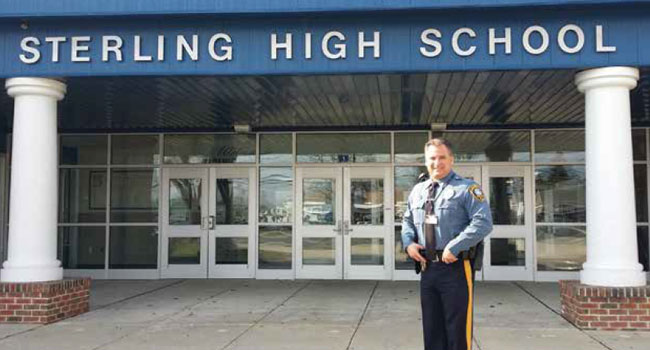
Making Schools More Secure
New Jersey high school upgrades security with new emergency response system
- By Sydny Shepard
- April 01, 2017
According to a study published in 2015 by U.S. News and World report, New Jersey High Schools ranked in the top 200 of approximately 20,000 high schools that were considered nationwide. As is evidenced by these rankings, quality education is a primary consideration for New Jersey parents, students, faculty and governing boards. Also primary to these stakeholders is a safe and secure environment, as is found at Sterling High School in Somerdale, New Jersey.
Sterling High School is a comprehensive regional public high school
and school district serving approximately 1,000 students in ninth
through twelfth grades. The school features a full complement of scholastic
and athletic activities in addition to a wide range of continually
updated academic programs. The campus comprises two buildings with
approximately 70 classrooms and 10 administrative offices. Video surveillance
cameras are located on the building exterior and throughout
the school and students, faculty and staff wear identification badges.
Visitors are not allowed into the building without an appointment
and all visitors must report to the general office upon arrival. Sterling
High School also has a full-time resource officer from the Somerdale
Police Department on board.
These are just some of the pro-active measures the school has in
place to help ensure a safe and secure environment for the 1,200-1,500
individuals who are in the school every day. In keeping with these
security initiatives, Sterling High School recently advanced their security
to the next level with the implementation of the Sielox CLASS
(Crisis Lockdown Alert Status System).
Sielox CLASS enhances awareness and communication in the event
of an emergency. Designed for use in the K-12 and higher education
environment, the system provides real-time classroom status, updates
and notifications to administrators and first responders using graphical
maps, email and text messaging to assist in making split-second
decisions in the event of an incident or developing situation.
The dynamic graphical map provides real-time status of up to right color conditions. The Sterling configuration
consists of green (Safe/secure); pink
(Morning Check-in); yellow (Danger outside
building); blue (Medical emergency); orange
(Disturbance); and red (Imminent Danger).
Per procedures established by school
Superintendent Mark Napoleon, teachers staff
and the local police department have all been
given access to the system. Teachers are
required to sign in to CLASS at the beginning
of the school day and label their room “green”,
indicating it is safe. As teachers move from
one classroom to another, they again sign in
and follow the same procedure, enabling the
front office to know the location of faculty
and the situation at all times.
“Implementation of CLASS has been a huge
success because everyone, law enforcement
included, is on board and committed,” said
Mark Napoleon, superintendent. “It’s also a
very easy system to use. It required almost no
learning curve, which also contributed to
acceptance.”
Sterling High School has used the system
twice since going operational. The first time
was an incident in the classroom when a student
would not leave as directed. Without confrontation
or making a call to the front office,
the teacher simply activated the disturbance
symbol on the computer and assistance was
able to come immediately. The second incident
involved a situation outside the building that
warranted the “lockout” crisis to be activated.
In both incidents, the CLASS system helped
mitigate potentially dangerous situations.
As the school moves forward with their
security initiatives, they intend to tie new
operations into CLASS. For instance, it is currently
integrated with an access control system
to remotely lock exterior doors. In the
future they will have a full lockdown of all
doors, including the interior. It is interfaced
to their paging system via the Sielox AC-1700
access control system outputs to trigger preprogrammed
announcements and messages.
Planned integration with existing hallway
motion sensors will “track” intruders on the
floorplan maps.
“Compared to other systems, the price and
capabilities of CLASS gave us more value,”
adds Superintendent Napoleon. “It was a
great way to go in making
the school safer and
more secure.”
This article originally appeared in the April 2017 issue of Campus Security Today.
About the Author
Sydny Shepard is the Executive Editor of Campus Security & Life Safety.